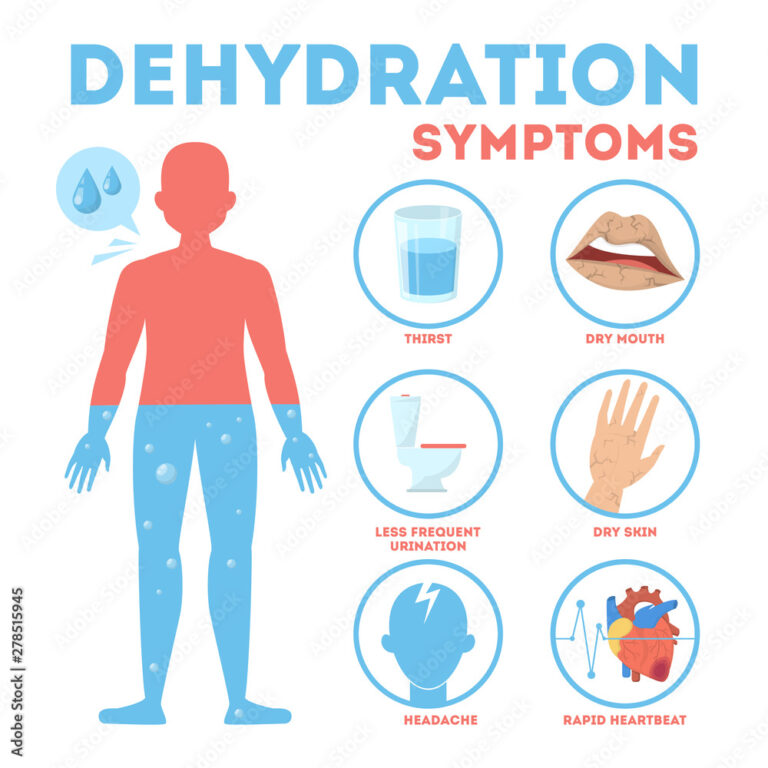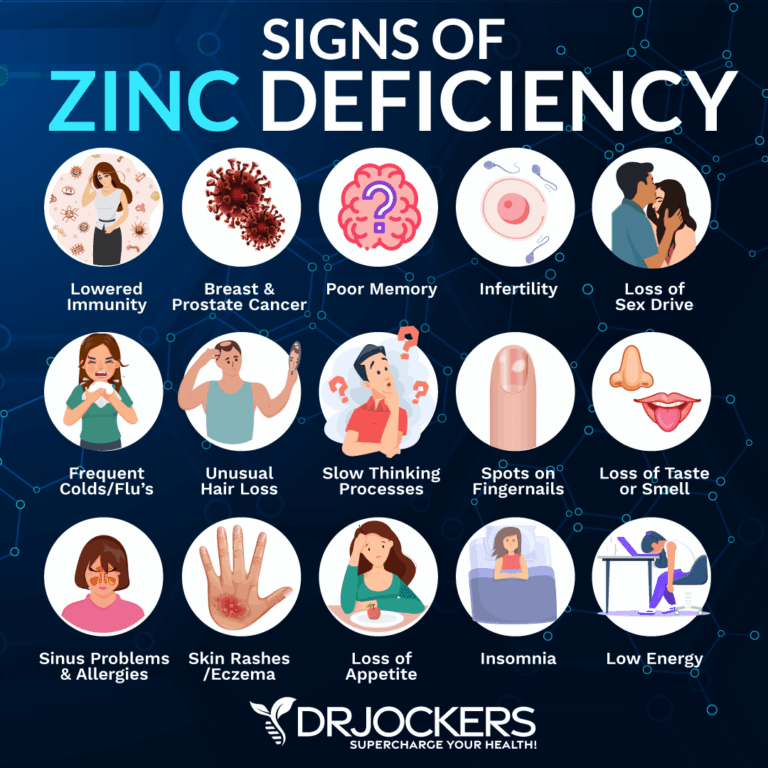The Ancient Elixir, Modern Wisdom: Drinking Apple Cider Vinegar Safely – Unlocking Benefits Without the Bite
For centuries, whispers of a potent, golden elixir have echoed through the annals of history. From Hippocrates, the father of medicine, who reportedly used it for its healing properties, to grandmothers worldwide who swore by its efficacy for everything from sore throats to digestive woes, Apple Cider Vinegar (ACV) has held a unique, almost mythical, place in our collective consciousness. In recent decades, these whispers have intensified into a roar, fueled by social media, wellness influencers, and a growing desire for natural health solutions. ACV has exploded onto the scene as a purported panacea for a myriad of modern ailments: a secret weapon for weight loss, a guardian of gut health, a balancer of blood sugar, and even a beacon for radiant skin.
The allure is undeniable. In a world saturated with complex pharmaceuticals and often confusing health advice, the simplicity of a fermented apple product offering such profound benefits is deeply appealing. Yet, like any powerful tool, ACV carries a double edge. Its very potency, the sharp, acidic bite that hints at its efficacy, is also the source of its potential harm if not wielded with respect and knowledge. Many embark on their ACV journey with enthusiasm, only to be met with discomfort, digestive distress, or, worse, irreversible damage. The story of ACV is not merely one of benefits, but one of balance, caution, and the profound importance of understanding how to harness its power safely.
This is not a tale for the uninitiated, nor for those seeking a magic bullet. This narrative is crafted for the knowledgeable, for those who understand that true wellness is a journey of informed choices, not blind faith. We will delve into the heart of ACV, exploring its science, celebrating its validated benefits, and, most crucially, illuminating the path to safe consumption, ensuring you can unlock its ancient wisdom without succumbing to its modern-day pitfalls.
The "Mother" Lode: What Makes ACV Tick?
To truly appreciate ACV, one must first understand its origins. The journey of apple cider vinegar begins, quite simply, with apples. These fruits are crushed to extract their juice, which is then fermented. The first stage of fermentation involves yeast converting the natural sugars in the apple juice into alcohol, much like in the production of hard cider. But the process doesn’t stop there. This alcoholic cider is then exposed to Acetobacter, a group of bacteria that convert the alcohol into acetic acid – the star compound responsible for ACV’s characteristic pungent aroma, sour taste, and many of its purported health benefits.
This two-step fermentation process is critical. What distinguishes high-quality, beneficial ACV from its refined counterparts is the presence of the "mother." This cloudy, cobweb-like substance floating in unfiltered, unpasteurized ACV is a complex matrix of beneficial bacteria, enzymes, and proteins. It’s a living ecosystem, a testament to the raw, unadulterated nature of the vinegar. While refined ACV, often clear and pasteurized, still contains acetic acid, it lacks the "mother" and its associated probiotic-like compounds, which many believe contribute significantly to the overall health benefits, particularly concerning gut health. Think of the "mother" as the soul of the vinegar, a rich biological fingerprint that sets it apart.
Beyond acetic acid, ACV also contains a fascinating array of other bioactive compounds. These include polyphenols, powerful antioxidants that combat oxidative stress; various vitamins and minerals in trace amounts (though not significant enough to be considered a primary source); and amino acids. It is this synergistic blend, with acetic acid leading the charge, that theoretically allows ACV to exert its influence on various physiological pathways. For instance, acetic acid is believed to inhibit certain enzymes involved in carbohydrate digestion, potentially slow gastric emptying, and enhance insulin sensitivity. The polyphenols contribute to its antioxidant and anti-inflammatory potential, while the "mother" hints at a role in modulating the gut microbiome. Understanding these foundational elements is the first step in appreciating ACV’s potential, and in respecting its power.
Unpacking the Promises: Evidence-Based Benefits
The wellness landscape is rife with fleeting fads and unsubstantiated claims. However, ACV stands apart in that some of its most lauded benefits are, in fact, supported by a growing body of scientific evidence. For the knowledgeable consumer, separating the hype from the validated is crucial.
1. The Maestro of Metabolism: Blood Sugar Regulation
Perhaps the most robust and consistently supported benefit of ACV lies in its profound impact on blood glucose levels. For individuals grappling with insulin resistance, prediabetes, or type 2 diabetes, ACV offers a compelling, natural adjunct to conventional management strategies.
- The Mechanism: The primary hero here is acetic acid. Studies suggest that ACV can improve insulin sensitivity, meaning your body’s cells become more responsive to insulin, allowing glucose to be efficiently absorbed from the bloodstream. It’s also thought to inhibit enzymes like alpha-amylase and alpha-glucosidase, which are responsible for breaking down complex carbohydrates into simple sugars, thereby slowing down the absorption of glucose into the bloodstream after a meal. Furthermore, some research indicates ACV might reduce hepatic glucose production – the amount of glucose your liver releases.
- The Evidence: Numerous studies have demonstrated ACV’s ability to lower post-prandial (after-meal) blood sugar spikes. For instance, research published in Diabetes Care found that consuming ACV before high-carb meals significantly improved insulin sensitivity in insulin-resistant individuals and reduced post-meal glucose and insulin levels in those with type 2 diabetes. Even in healthy individuals, ACV has been shown to reduce glucose responses.
- Safe Application: To harness this benefit safely, timing is key. Consuming 1-2 tablespoons of diluted ACV (diluted in at least 8 ounces of water) about 15-30 minutes before a carbohydrate-rich meal is often recommended. This allows the acetic acid to begin its work before the glucose surge. Crucially, individuals on diabetes medication must consult their healthcare provider before incorporating ACV, as it can potentiate the effects of these drugs, leading to dangerously low blood sugar (hypoglycemia). ACV is a valuable tool, but it’s an adjunct, not a replacement, for medical advice and prescribed treatments.
2. The Satiety Signal: Weight Management
The promise of weight loss is a powerful magnet, and ACV has been widely touted as a fat-burning miracle. While its role here is more nuanced than often portrayed, it does offer some potential benefits.
- The Mechanism: ACV is not a magic bullet for melting fat, but it may contribute to weight management by enhancing satiety. Acetic acid is believed to slow gastric emptying, meaning food stays in your stomach longer, promoting a feeling of fullness and potentially reducing overall calorie intake.
- The Evidence: Some studies, notably one published in the Journal of Agricultural and Food Chemistry, have shown that ACV consumption led to reduced body weight, body fat mass, and waist circumference in obese Japanese adults over a 12-week period. However, these effects were modest, and the mechanisms are still being fully elucidated. It’s essential to understand that ACV’s contribution to weight loss is likely minimal without broader dietary and lifestyle changes.
- Safe Application: If used for weight management, it should be integrated as part of a holistic approach that includes a balanced diet and regular exercise. The same dilution and timing principles apply. Do not fall prey to the temptation of increasing dosage in hopes of faster results; this only escalates the risk of side effects.
3. The Gut Whisperer: Digestive Health
The gut microbiome is now recognized as a cornerstone of overall health, and ACV’s potential role in supporting it is a frequent topic of discussion.
- The Mechanism: While ACV itself is not a direct source of probiotics in the same way fermented foods like kimchi or sauerkraut are (the "mother" contains beneficial bacteria, but they may not survive the acidic stomach environment to colonize the gut in large numbers), it may exert an indirect positive effect. The polyphenols in ACV can act as prebiotics, nourishing the beneficial bacteria already residing in your gut. Furthermore, some hypothesize that its acidity might help optimize stomach pH, which is crucial for proper protein digestion and nutrient absorption, especially for individuals with low stomach acid (hypochlorhydria).
- The Evidence: Research directly linking ACV to significant changes in human gut microbiome composition is still emerging and often based on animal studies. Anecdotal reports, however, are plentiful, with many individuals reporting improved digestion and reduced bloating.
- Safe Application: For digestive benefits, start with a smaller dose (e.g., 1 tablespoon diluted) and observe how your body reacts. Some find it best taken with food to buffer its acidity. If you have conditions like GERD, stomach ulcers, or other digestive sensitivities, ACV may exacerbate symptoms, so extreme caution and medical consultation are advised.
4. The Heart’s Ally: Cardiovascular Health
Less explored in humans but promising in animal models, ACV has shown some indications of supporting heart health.
- The Mechanism: Animal studies have suggested that acetic acid may help lower cholesterol and triglyceride levels, and potentially contribute to blood pressure reduction through its influence on renin activity. The antioxidant properties of ACV’s polyphenols may also protect against oxidative damage to cardiovascular tissues.
- The Evidence: Human studies are scarce and often small-scale, making it difficult to draw definitive conclusions. While these early findings are intriguing, ACV should absolutely not be considered a substitute for prescribed cardiovascular medications or established lifestyle interventions.
- Safe Application: Integrate ACV as part of a heart-healthy diet and lifestyle, always under the guidance of a healthcare professional if you have pre-existing heart conditions or are on medication.
5. Skin and Hair: The External Glow (with an Internal Link)
While many ACV applications for skin and hair are topical (e.g., diluted rinses for balancing pH or as an antimicrobial), its internal consumption can indirectly support these areas.
- The Mechanism: A healthy gut microbiome and efficient nutrient absorption, potentially supported by ACV, are reflected in skin clarity and hair vitality. Antioxidants also play a role in cellular health.
- Caution for Topical Use: Always dilute ACV extensively (e.g., 1 part ACV to 3-10 parts water) before applying to skin or hair, as undiluted ACV can cause severe burns.
The Dark Side of the Apple: Potential Side Effects and Risks
The very characteristics that make ACV beneficial—its acidity and potency—are also its greatest liabilities if not handled with profound respect. The stories of individuals experiencing severe adverse effects from improper ACV use are sobering and underscore the necessity of caution. For the knowledgeable, understanding these risks is not about fear-mongering, but about informed prevention.
1. The Silent Eroder: Enamel Damage
This is arguably the most significant and irreversible risk associated with ACV consumption.
- The Mechanism: Tooth enamel, the hard, protective outer layer of your teeth, is highly susceptible to acid erosion. ACV, with a pH typically between 2.5 and 3.5, is significantly acidic. Repeated exposure to this acid can soften enamel, making it vulnerable to wear and tear. Once enamel is eroded, it does not regenerate.
- The Consequences: Increased tooth sensitivity, cavities, discoloration, and ultimately, structural damage to the teeth. The cost of dental repair for extensive erosion can be exorbitant.
- Prevention: This is non-negotiable.
- Dilute, Dilute, Dilute: Never consume ACV neat. Always mix 1-2 tablespoons with at least 8 ounces (240ml) of water.
- Use a Straw: This helps bypass direct contact with your teeth.
- Rinse Immediately: After drinking ACV, rinse your mouth thoroughly with plain water to neutralize any residual acid.
- Wait to Brush: Do not brush your teeth immediately after consuming ACV. Brushing softened enamel can cause further damage. Wait at least 30 minutes, ideally an hour, for your saliva to naturally re-harden the enamel.
2. The Gut Gripe: Digestive Upset
While ACV can aid digestion for some, for others, its acidity can be a source of significant discomfort.
- The Mechanism: The high acidity can irritate the lining of the esophagus and stomach. It can also exacerbate symptoms of conditions like GERD (gastroesophageal reflux disease), acid reflux, heartburn, gastritis, and stomach ulcers. In some individuals, it may also lead to diarrhea or nausea, particularly when taken on an empty stomach or in excessive quantities.
- The Symptoms: Heartburn, indigestion, nausea, vomiting, abdominal pain, diarrhea, or a burning sensation in the throat or chest.
- Prevention:
- Start Low, Go Slow: Begin with a very small dose (e.g., 1 teaspoon in 8 oz water) and gradually increase if tolerated.
- Take with Food: Consuming ACV with or immediately after a meal can help buffer its acidity and reduce irritation.
- Listen to Your Body: If you experience any persistent digestive discomfort, reduce the dose or discontinue use.
3. The Unseen Threat: Drug Interactions
This is a critical area for anyone on prescription medication. ACV can interact with several types of drugs, leading to potentially dangerous consequences.
- Mechanism & Interactions:
- Diabetes Medications (Insulin, Sulfonylureas): As ACV can lower blood sugar, combining it with these medications can lead to hypoglycemia (dangerously low blood sugar).
- Diuretics (Water Pills): Some diuretics cause the body to excrete potassium. ACV, in high doses or long-term use, may also contribute to potassium depletion, increasing the risk of hypokalemia (low potassium).
- Laxatives: Similar to diuretics, chronic use of certain laxatives can deplete potassium. Combining with ACV could exacerbate this.
- Digoxin (Lanoxin): This heart medication is affected by potassium levels. If ACV contributes to potassium depletion, it could increase the toxicity of digoxin.
- Prevention: Always, without exception, consult your doctor or pharmacist before starting ACV if you are on any prescription medications, especially those for diabetes, heart conditions, or blood pressure. This is not a recommendation; it is a mandate for your safety.
4. The Burning Sensation: Esophageal and Throat Irritation
- Mechanism: Undiluted ACV is a strong acid that can cause chemical burns to the delicate mucous membranes of the esophagus and throat.
- Symptoms: Severe burning pain, difficulty swallowing, inflammation, and potential long-term damage.
- Prevention: Never drink undiluted ACV. This cannot be stressed enough.
5. The Silent Drain: Potential for Bone Health Concerns
While less common and typically associated with very high, prolonged consumption, there are concerns about ACV’s impact on bone density.
- Mechanism: Some theories suggest that chronic, high-dose ACV consumption might, in rare cases, contribute to mineral leaching, particularly potassium, which is crucial for bone health. There’s also a case report of a young woman experiencing hypokalemia and osteoporosis after consuming excessive amounts of ACV for years.
- Prevention: Moderate use is key. Ensure a balanced diet rich in calcium, vitamin D, and other bone-supporting nutrients. If you have concerns about bone health, consult your doctor.
The Art of Safe Consumption: Practical Tips and Protocols
The narrative of safe ACV use is one of mindfulness, respect for its power, and adherence to simple, yet critical, protocols. It’s about integrating it wisely, not impulsively.
1. Dilution is Non-Negotiable: The Golden Rule
This is the single most important rule. Think of ACV as a concentrate; it’s never meant to be consumed straight.
- The Ratio: A generally accepted safe ratio is 1-2 tablespoons (15-30ml) of ACV mixed into at least 8 ounces (240ml) of water. For those new to ACV or with sensitive stomachs, starting with just 1 teaspoon in 8 ounces of water is a wise approach.
- Beyond Water: If the taste is too intense, you can dilute it in unsweetened apple juice (though this adds sugar), herbal tea, or even sparkling water. Some people incorporate it into salad dressings or marinades, which naturally dilutes it.
2. Timing is Everything: When to Take Your Elixir
The timing of your ACV intake can significantly influence its effectiveness and minimize side effects.
- For Blood Sugar Benefits: As discussed, consuming it 15-30 minutes before a carbohydrate-rich meal is optimal.
- For Digestive Comfort: If you experience stomach upset, taking ACV with or immediately after a meal can help buffer its acidity and reduce irritation.
- Avoid Empty Stomach (for some): While some people tolerate ACV on an empty stomach, many find it causes digestive distress. Experiment cautiously.
- Avoid Before Bed: Drinking ACV right before lying down can increase the risk of acid reflux or heartburn, especially for those prone to it.
3. The Straw and Rinse Method: Protecting Your Pearly Whites
Your teeth are precious. Make their protection a priority.
- Use a Straw: This minimizes direct contact of the acidic liquid with your tooth enamel.
- Rinse with Water: After finishing your ACV drink, swish your mouth thoroughly with plain water for about 30 seconds to neutralize the acid.
- Wait to Brush: As mentioned, allow at least 30-60 minutes before brushing your teeth. Saliva helps to remineralize and harden enamel, and brushing too soon can abrade softened enamel.
4. Start Low, Go Slow: The Gentle Introduction
Your body needs time to adjust to new substances.
- Begin Small: Start with a very conservative dose, perhaps 1 teaspoon diluted in 8 ounces of water, once a day.
- Observe and Adjust: Pay close attention to how your body responds. If you experience no discomfort, you can gradually increase the dose to 1 tablespoon, and then potentially to 2 tablespoons (if desired and tolerated), always maintaining proper dilution.
- Consistency over Quantity: Regular, moderate use is more beneficial and safer than sporadic, high-dose consumption.
5. Quality Matters: Choose Wisely
Not all ACV is created equal.
- "With the Mother": Always opt for unfiltered, unpasteurized ACV that explicitly states "with the mother." This indicates the presence of beneficial bacteria, enzymes, and proteins.
- Organic: Choosing organic ensures that the apples used were grown without synthetic pesticides or fertilizers.
- Reputable Brand: Select a well-known, trusted brand to ensure product quality and consistency.
6. Alternative Forms: Capsules and Gummies
The market now offers ACV in capsule and gummy forms, appealing for their convenience and taste.
- Pros: They bypass the strong taste and, in theory, protect tooth enamel.
- Cons:
- Variable Acetic Acid Content: The actual amount of acetic acid, the primary active compound, can vary significantly between brands and may not be clearly stated. Some may contain very little.
- Missing "Mother": Many capsules and gummies do not contain the "mother" or its associated benefits.
- Still a Risk for GI Upset: Even in capsule form, the concentrated ACV can still cause digestive irritation for sensitive individuals.
- Added Sugars/Artificial Ingredients: Gummies, in particular, often contain added sugars, artificial flavors, and colors, which detract from the health benefits.
- Recommendation: If choosing capsules or gummies, research brands thoroughly, look for third-party testing, and understand that their efficacy might not be equivalent to liquid ACV "with the mother." Liquid, diluted ACV remains the gold standard for purity and control over dosage.
7. Listen to Your Body: The Ultimate Guide
No article or expert advice can supersede your body’s signals.
- Pay Attention: Any persistent discomfort, pain, or adverse reaction is a clear sign to reduce your dose or discontinue use.
- Don’t Push Through Pain: Believing "no pain, no gain" is dangerous when it comes to internal acidity. Discomfort is your body’s way of telling you something is wrong.
When to Seek Professional Guidance: The Wise Consumer
The knowledgeable consumer understands that self-care has its limits, and professional medical advice is invaluable. There are specific circumstances where consulting a healthcare provider before or during ACV use is not just advisable, but absolutely essential.
- Pre-existing Medical Conditions:
- Diabetes: Due to ACV’s impact on blood sugar, close monitoring and physician consultation are vital to prevent hypoglycemia and adjust medication if necessary.
- Kidney Disease: Individuals with compromised kidney function may have difficulty processing acids and maintaining electrolyte balance.
- Gastroesophageal Reflux Disease (GERD), Ulcers, Gastritis: ACV can exacerbate these conditions.
- Osteoporosis/Bone Density Issues: Discuss potential long-term risks with your doctor.
- Medication Use: Reiterate the critical importance of discussing ACV with your doctor or pharmacist if you are on any prescription medications, especially for diabetes, heart conditions (like Digoxin), blood pressure (diuretics), or those that can affect potassium levels.
- Pregnancy and Breastfeeding: There is a significant lack of research on ACV safety during pregnancy and lactation. It is always best to err on the side of caution and avoid its internal use during these periods unless specifically advised by your doctor.
- Persistent Side Effects: If you experience ongoing digestive upset, throat irritation, or any other concerning symptoms despite proper dilution and moderate use, discontinue ACV and consult your doctor.
- Lack of Desired Effects: If you’re using ACV for a specific health benefit and are not seeing results, do not blindly increase the dosage. Re-evaluate your approach with a healthcare professional to determine if ACV is appropriate for your goals or if other interventions are needed.
Beyond the Bottle: Holistic Health
It is crucial to remember that ACV, like any supplement or natural remedy, is a tool, not a magic cure. Its story is best told within the larger narrative of holistic health. While it can be a beneficial addition, it cannot compensate for an unhealthy lifestyle.
True wellness is built on a foundation of:
- A Balanced, Nutrient-Dense Diet: Prioritizing whole, unprocessed foods, abundant fruits and vegetables, lean proteins, and healthy fats.
- Regular Physical Activity: Movement is fundamental for metabolic health, mood, and overall vitality.
- Adequate Sleep: Rest is restorative, essential for hormonal balance and cellular repair.
- Stress Management: Chronic stress undermines every system in the body.
- Strong Social Connections: Human connection is a powerful determinant of well-being.
ACV, when used safely and judiciously, can be a supportive player in this comprehensive wellness symphony. It can help fine-tune certain bodily functions, but it is not the conductor of the orchestra. Its greatest potential is realized when integrated into a lifestyle that already prioritizes these foundational elements.
Conclusion: A Balanced Perspective
The ancient elixir of Apple Cider Vinegar continues to captivate and intrigue us. Its journey from historical remedy to modern wellness darling is a testament to its enduring appeal and, for some of its claims, its scientific validation. Yet, the story of ACV is incomplete without the crucial chapters on safety and responsibility.
For the knowledgeable individual, the path to harnessing ACV’s benefits is clear: approach it with respect, dilute it meticulously, protect your teeth, start small, and always listen to your body. Understand its mechanisms, appreciate its proven benefits, but never underestimate its potential for harm if misused.
In a world often seeking quick fixes, ACV stands as a powerful reminder that natural remedies, even those derived from a humble apple, demand our informed attention and careful stewardship. When treated with this blend of wisdom and caution, this golden liquid can indeed be a valuable ally on your journey to optimal health, offering its ancient wisdom without the bite of unintended side effects.







